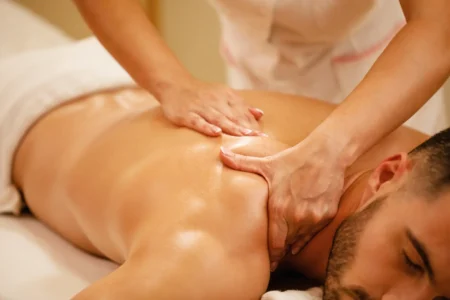 Massage therapy is more than just relaxation — when done properly, it can improve circulation, reduce pain, ease anxiety, and even support immunity. But not all massages are equal. What separates a “good” massage from one that truly makes a difference?
Massage therapy is more than just relaxation — when done properly, it can improve circulation, reduce pain, ease anxiety, and even support immunity. But not all massages are equal. What separates a “good” massage from one that truly makes a difference?
Here’s what you should know.
It Starts with the Right Pressure
One of the most misunderstood elements of massage is pressure. Some believe deeper is always better — but that’s not the case. The best massage matches pressure to purpose.
Light pressure works well for calming the nervous system or supporting lymph flow. Moderate pressure relieves most muscle fatigue. Deep work should only be used on areas with chronic tightness — and even then, only when the body is ready to receive it. If it feels painful or makes you hold your breath, it’s probably too much.
A skilled massage therapist knows how to find the balance, adjusting as your body responds.
Timing and Flow Matter
A great massage feels like a continuous, thoughtful experience — not a set of disconnected moves. Smooth transitions, consistent pace, and intentional movement tell your nervous system: it’s safe to relax.
When rhythm is off or touch feels mechanical, the body stays on guard. That’s why real therapeutic benefit comes not just from what is done, but how it’s done.
Communication Is Essential
An effective massage is not one-size-fits-all. Your therapist needs to understand where you carry tension, how your body reacts, and what kind of pressure feels right. That can only happen through honest communication.
If something feels too intense or if your body responds particularly well to a certain technique, speak up. Your input makes the session better.
Breath as a Healing Tool
Many people forget that breath plays a role in massage. When you breathe deeply and evenly, your body naturally relaxes. That relaxation tells tight muscles it’s safe to let go.
On the other hand, holding your breath during deep work can trigger the opposite response — making muscles clench and resist. Conscious breathing enhances the effectiveness of every technique.
Long-Term Care, Not Just a Quick Fix
The biggest gains from massage come with consistency. You don’t have to go every week, but making it part of your wellness routine helps prevent issues from building up. It’s like movement or stretching — the results build over time.
Even monthly sessions can improve posture, stress management, and recovery, especially if you sit all day or train your body hard.
Final Thought
A truly effective massage is a partnership. It’s not just about hands and muscles — it’s about trust, attention, and flow. Whether you’re going in for stress relief, pain management, or just to feel more connected to your body, understanding what makes a massage work helps you get the most out of every session.
Massage isn’t a luxury — it’s a smart way to support long-term health from the inside out.
Picture Credit: Freepik
